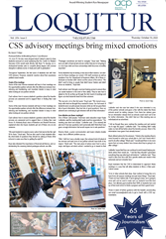 Shannon Keough
Shannon KeoughEvery nine and a half minutes, someone is infected with HIV in the United States. In Philadelphia, the rate of infection is five times higher than the national average.
In the face of Mother Nature’s cloudy skies and constant drizzle, thousands across the greater Philadelphia region came out for the annual Philly AIDS Walk Sunday, Oct. 18. Despite the disheartening weather, the positive outlook of participants was evident throughout the 8.4 mile walk.
The event raises money for regional AIDS service providers. This is the 23rd year for the walk and several Cabrini organizations were involved in the 2009 event. Members of the sociology and psychology club and Catholic Relief Services were just a few of the participants in the walk.
“We get involved with events that benefit society. We try to practice what we preach,” Masha Kozlovskay, senior psychology, sociology and history major, said. Kozlovskay is also the president of the psychology club.
“Marriage and the construction of a family plays such a huge role in what society considers to be an ideal life. When one is diagnosed with HIV, that automatically drastically reduces someone’s chances of forming an intimate relationship and living up to society’s standards,” Kozlovskay said.
Originally from Russia, Kozlovskay personally knows two people who are HIV positive. Both were infected during their time in the Russian army.
“This is an important issue in general, but college is supposed to be the time of our lives and it’s important for people to be aware of the diseases that are out there in order for them to make constructive decisions,” Kozlovskay said.
The walk informed and cemented the importance of this cause for Cabrini students.
“It was certainly helpful to walk around and see people coming to support others they knew,” Nick Kaminski, junior psychology and sociology major and sociology club member, said. “A lot of people had teams to support those who died of HIV.”
Kaminski personally raised $20. He has also participated in other various events in Philadelphia that raise awareness for other illnesses.
“I usually do walks for breast cancer and other causes, so I enjoyed being a part of this one,” Kaminski said. “The sheer scope of the AIDS Walk is bigger. This one was massive.”
“It was really moving to see thousands come together for a cause, to see everyone together really reinforces what I do,” Kristie Bergin, senior social work and religious studies major, said.
Bergin is part of the Catholic Relief Services HIV/AIDS issue group, as well as the Cabrini Chapter CRS secretary. Two other members of the group also participated in the walk.
“It’s such a preventable disease and a lot of people are misinformed about it,” Bergin said. “I want to spread that knowledge to peers.”
Across the Delaware Valley, 30,000 people are infected with the virus. The impact of HIV/AIDS has also personally affected the Cabrini students who participated in the walk.
“I had a friend in high school whose father passed away because of AIDS,” Bergin said. “During the Southeastern Conference of Catholic AIDS Ministers, I also met a woman who’s had HIV for 20 years. She got it at the beginning of the outbreak.”
Philly AIDS Walk spokesperson Cari Bender had her call to action six years ago when she was reached out to by someone on the board of the AIDS fund. Bender was a publicist and consultant to various non-profits in the past.
“They hired me to work on the transition between the old and new director. The old director and I just hit it off. I really believe in the cause,” Bender said.
Bender said that the rain may have held off the older generation of participants from coming out, but it did not stop the younger generation. However, this year the walk raised $350,000, down nearly $50,000 from last year.
“We were down in numbers overall, but it’s very possible the younger people didn’t care about the rain,” Bender said. “We still had people from all walks of life.”
The Philly AIDS Walk was a visible event for students across the region. The event utilized various social networking media to connect to college students.
“It’s interesting. I think they took a lot of time using social media this year and the younger generation is more in touch with those types of medias,” Bender said.
Empowered by the walk, Kozlovskay hopes to continue to spread awareness of HIV prevention to her peers.
“At the end of the day, this is our generation’s responsibility,” Kozlovskay said.


